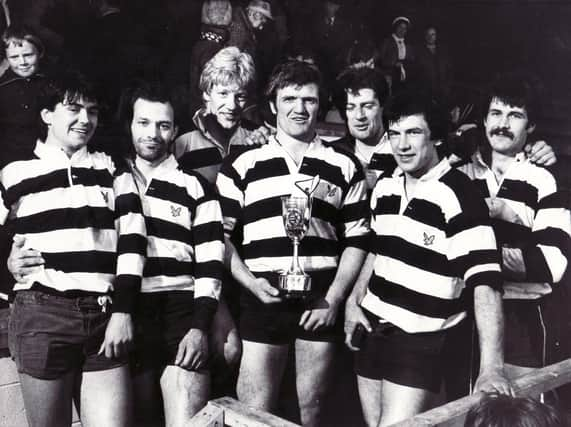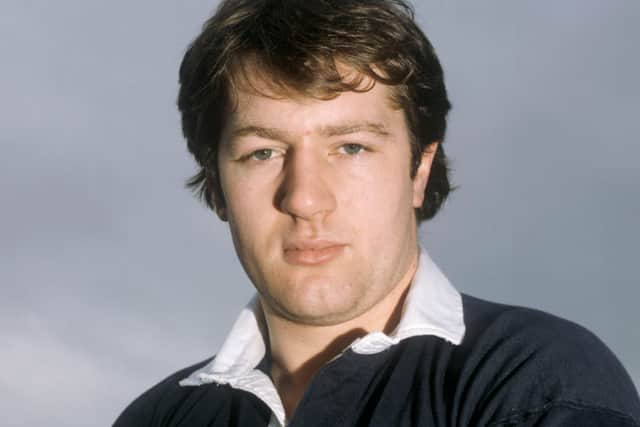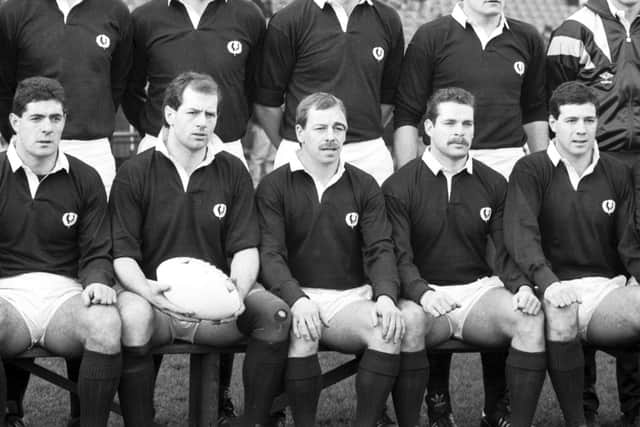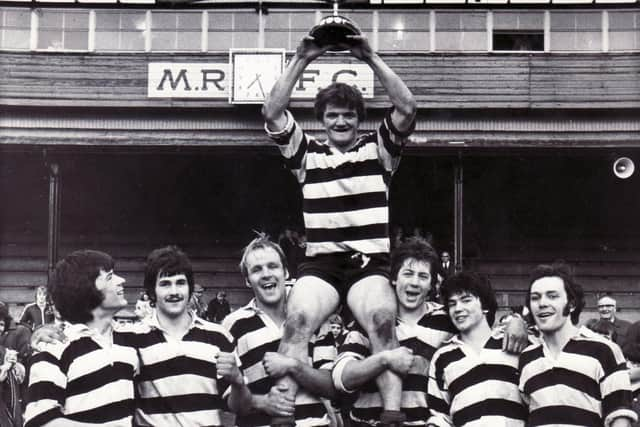Gary Callander: Roger Baird pays tribute to Kelso’s architect and enforcer in brilliant 1980s team


Roger Baird, their elegant winger, remembers Callander as “the architect” of their many successes, a captain whose brilliant rugby brain meant he was also de facto coach.
Their successes on the sevens circuit were beyond compare but they were able to translate it into the 15-a-side game and in season 1987-88 Kelso broke Hawick’s stranglehold on the league by becoming champions of Scotland, with Callander, playing at hooker, at the helm. The title was retained the following season.
Advertisement
Hide AdAdvertisement
Hide AdSuch was Kelso’s success that the club supplied five players to the national side during the 1988 Five Nations. Calendar captained Scotland and had alongside him Baird, John Jeffrey, Alan Tait and Andrew Ker.


Baird was only 18 when he won his first Borders sevens medal at Melrose in 1978 and Kelso went on to dominate the tournament, a catalyst for their successes in 15-a-sides.
“We got a lot of success early in the sevens with what was a very young side,” recalls Baird. “When we first won at Melrose there were four or five of us under 20, with bags of enthusiasm. We were quite lucky in that we then formed into a decent 15s unit as the Eighties went on culminating in those two championships towards the end of the decade.
“Gary was the architect. He was captain but unofficially the coach. He put the forwards together. Charlie Stewart, who was an ex-Scotland player himself and a fantastic man, was the actual coach but he knew that Gary was his general on the field.
“Technically, Gary was a phenomenal coach. In the set-piece, body position, ball presentation… all the really important things, he was a master of that and as good as any I’ve worked with, and I include the fantastic Jim Telfer and Ian McGeechan in that. Gary had a phenomenal rugby brain.”


Callander combined his tactical nous with an abrasive edge.
“He was hard as nails,” said Baird. “When you play in the front row with all the shenanigans that go on in there you’ve got to be able to handle yourself and Gary was a bit of an enforcer too. He led from the front and demanded a lot from his forwards. He was pretty uncompromising.”
He was capped six times by Scotland, with the imposing figure of Hawick hooker Colin Deans denying him more opportunities. But it is a mark of Callander’s leadership skills that he captained his country on five of those occasions.


“Colin Deans said it was Gary who made him work as hard as he did at his game because he knew if he fell away for a minute there was that quality of hooker chasing him for his place,” explained Baird.
Advertisement
Hide AdAdvertisement
Hide Ad“If he played today he would have had 40 caps, given the number of games Scotland play and the use of replacements.”
Alongside his half dozen caps and two Scottish titles, Callander also led Kelso to their first Border League title in 50 years, in 1985-86, and won five Melrose Sevens medals.
His prowess in the abbreviated game was such that he twice played in the final of the prestigious Hong Kong Sevens, once for the Co-optimists and once for the Scottish Border Club when he was one of five Kelso players in the side that beat the All Blacks in the semi-final before losing to Australia in the final.
After his playing days ended Callander went on to coach Haddington, Gala, Watsonians and Kelso. Baird says he should have coached at a higher level but believes his tendency to speak his mind was not always appreciated.
“He railed against establishment a bit and they were wary of Gary. He’d quite often say it how it was and he perhaps wasn’t a natural diplomat.”
Nevertheless, he was the cornerstone of Kelso’s greatest team and for that Baird is grateful.
“It was amazing and we were very lucky,” said the former British & Irish Lion. “But that was what the Borders were like. If you came from the town you played for the local team.
“It was a town of 5,500 and the championship had been ruled for years by fantastic Hawick sides, so to get one over them was amazing.
Advertisement
Hide AdAdvertisement
Hide Ad“They were good days, pretty uncomplicated. It was amateur but I sometimes think we were the lucky ones. In fact, I know we were the lucky ones.”
A message from the Editor: Thank you for reading this article. We're more reliant on your support than ever as the shift in consumer habits brought about by Coronavirus impacts our advertisers.If you haven't already, please consider supporting our trusted, fact-checked journalism by taking out a digital subscription.
Comments
Want to join the conversation? Please or to comment on this article.
